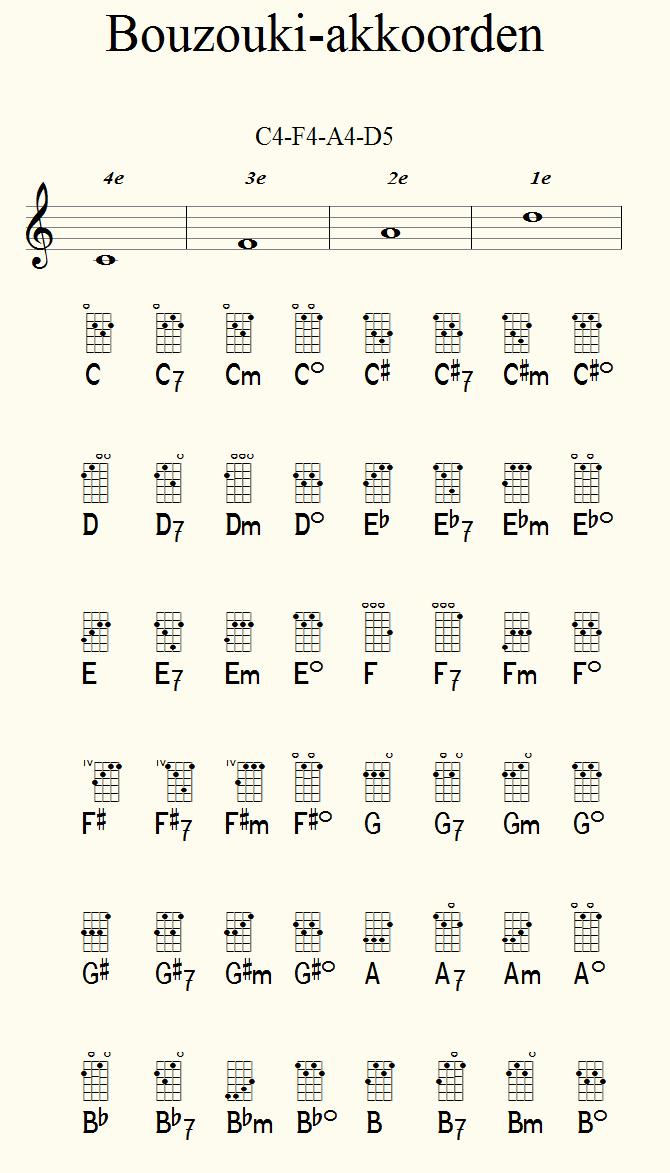Bouzouki chords: Difference between revisions
No edit summary |
No edit summary |
||
| Line 3: | Line 3: | ||
If the bouzouki is subsequently replaced by, for example, a [[baglamas chords|baglamas]] just enter the instrument code "{{Literal|baglamas}}" and you're done! | If the bouzouki is subsequently replaced by, for example, a [[baglamas chords|baglamas]] just enter the instrument code "{{Literal|baglamas}}" and you're done! | ||
A trichordo-bouzouki (three-string bouzouki) is tuned like a baglamas but one octave lower and uses the fingerings of a baglamas as well. The same goes for the other sister of the bouzouki, the tzouras. | A trichordo-bouzouki (three-string bouzouki) is tuned like a baglamas but one octave lower and uses the fingerings of a baglamas as well. The same goes for the other sister of the bouzouki, the [[tzouras]]. | ||
[[File:grepentabel-bouzouki.jpg|bouzouki chords]] | [[File:grepentabel-bouzouki.jpg|bouzouki chords]] | ||
Revision as of 13:17, 23 February 2023
A bouzouki is a Greek stringed instrument with (usually) four double strings. Bouzouki chords can be written manually as chord symbols and chord diagrams next to the music, but that means a lot of work. If chord symbols are supplied already you can quickly add diagrams to your chord symbols by entering under [Part properties|Chord diagrams] "bouzouki" to fill in. For each notated chord symbol, the corresponding diagrams is found and displayed. In this way chord diagrams are also displayed correctly after transpose.
If the bouzouki is subsequently replaced by, for example, a baglamas just enter the instrument code "baglamas" and you're done!
A trichordo-bouzouki (three-string bouzouki) is tuned like a baglamas but one octave lower and uses the fingerings of a baglamas as well. The same goes for the other sister of the bouzouki, the tzouras.


